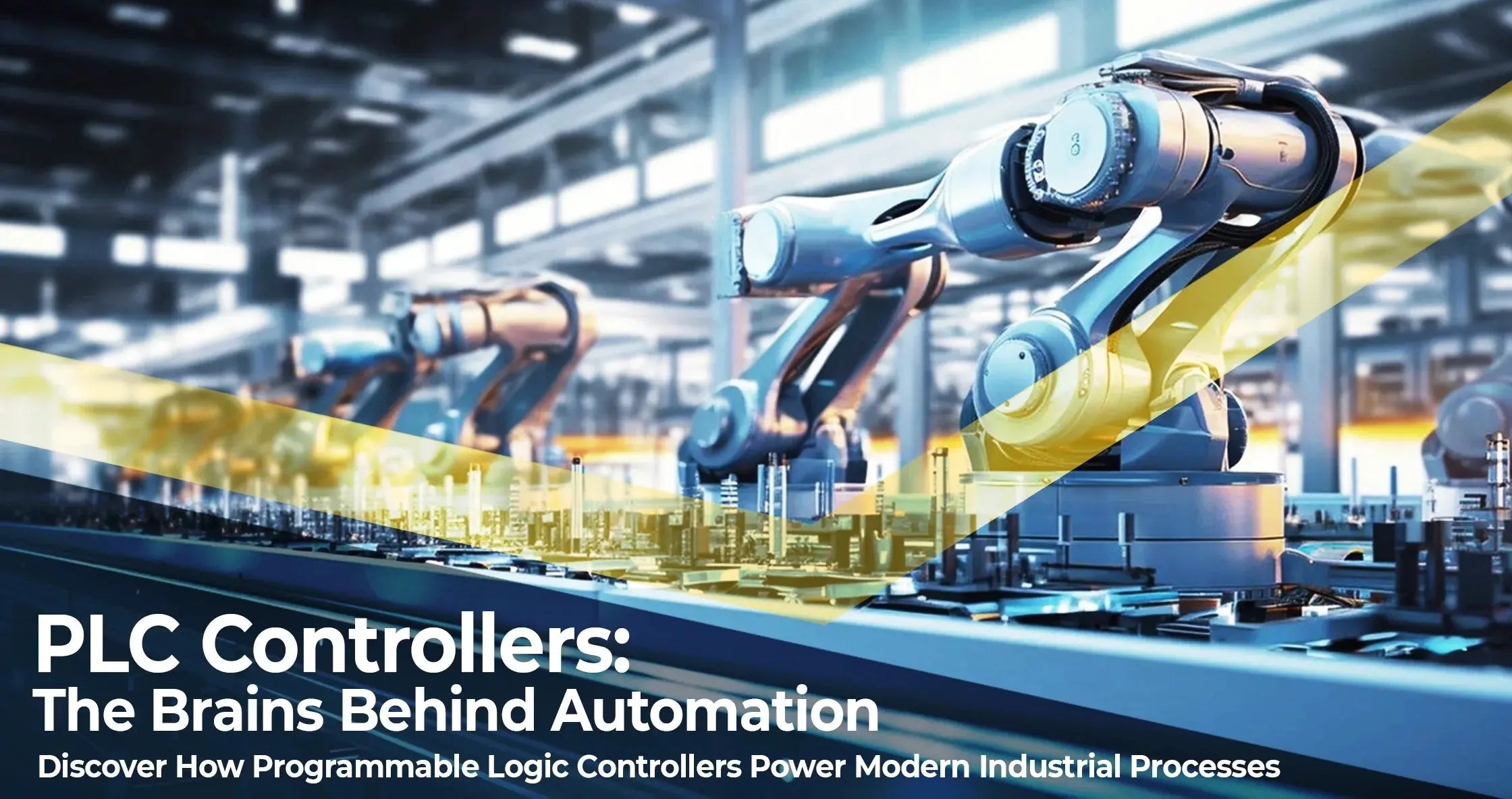En el cambiante mundo de la automatización industrial, los controladores PLC, o controladores lógicos programables, desempeñan un papel esencial en la gestión de procesos y maquinaria. Al controlar inteligentemente las operaciones en tiempo real, ayudan a garantizar una eficiencia y productividad óptimas. Este artículo analiza exhaustivamente los controladores PLC, explorando sus componentes, funcionalidades e importancia en los sistemas de automatización modernos.
¿Qué es un controlador PLC?
Un controlador lógico programable (PLC) es una computadora digital especializada diseñada para la automatización. Funciona recibiendo entradas de diversos sensores e interruptores, procesando esta información y enviando comandos a dispositivos de salida como motores, luces y otras máquinas. Esta funcionalidad única permite a los PLC optimizar procesos y mejorar la eficiencia operativa.
Comprender la funcionalidad principal
Los PLC funcionan en un bucle continuo, monitorizando constantemente las entradas y actualizando las salidas según corresponda. Su funcionalidad principal consiste en:
- Monitoreo: Los PLC leen entradas de sensores u operadores humanos y escanean constantemente para detectar cambios en el entorno.
- Toma de decisiones: basándose en instrucciones programadas, los PLC evalúan los datos de entrada y determinan las acciones apropiadas.
- Control: Siguiendo el proceso de toma de decisiones, los PLC envían comandos de salida para controlar la maquinaria y los procesos de manera oportuna.
Componentes de los controladores PLC
Comprender los componentes básicos de los controladores PLC es crucial para comprender su funcionamiento. Los componentes clave incluyen:
1. Unidad central de procesamiento (CPU)
La CPU actúa como el cerebro del PLC. Procesa las señales de entrada y ejecuta la lógica de control programada.
2. Módulos de entrada/salida
Los módulos de entrada recopilan datos de los sensores, mientras que los de salida transmiten señales de control a la maquinaria. Permiten la interacción con el entorno externo, lo que los hace esenciales para la eficiencia operativa.
3. Fuente de alimentación
Un suministro de energía estable es crucial para el funcionamiento de los PLC, garantizando que funcionen de manera confiable sin interrupciones.
Programación de PLC: una mirada más de cerca
La programación es un aspecto vital para el uso eficaz de los PLC. Los ingenieros suelen usar lenguajes como la lógica de escalera, el diagrama de bloques de funciones (FBD) y el texto estructurado (ST) para escribir programas que determinan el comportamiento del PLC.
Lógica de escalera
La lógica de escalera se asemeja mucho a los diagramas lógicos de relés eléctricos. Esto facilita su adaptación para los ingenieros familiarizados con los sistemas tradicionales.
Diagramas de bloques de funciones (FBD)
El FBD permite la representación gráfica de funciones mediante bloques. Este método es especialmente útil para sistemas más complejos, ya que proporciona una comprensión visual clara del proceso de control.
Aplicaciones de los controladores PLC
Los PLC se utilizan en una amplia gama de industrias y aplicaciones:
- Fabricación: En las líneas de producción, los PLC controlan robots de ensamblaje, monitorean la calidad del producto y administran las operaciones de la maquinaria.
- Procesamiento de alimentos: Garantizan un control preciso sobre procesos como la mezcla, la cocción y el envasado.
- Tratamiento de agua: Los PLC son cruciales para automatizar los procesos de tratamiento y controlar bombas y válvulas.
El futuro de los PLC en la automatización
Con los continuos avances tecnológicos, los PLC se están convirtiendo en parte integral de las tendencias de la Industria 4.0. Ahora suelen ofrecer opciones de conectividad que les permiten integrarse con dispositivos IoT y plataformas en la nube.
Integración de IoT
La Internet de las cosas (IoT) permite a los PLC acceder a datos en tiempo real desde una variedad de dispositivos y sistemas, lo que mejora las capacidades de toma de decisiones y la eficiencia operativa.
Medidas de seguridad
A medida que los sistemas de automatización se interconectan, la seguridad de los PLC es primordial. Los fabricantes están implementando sólidas medidas de ciberseguridad para protegerse contra las amenazas.
Conclusión
En conclusión, los controladores PLC son componentes vitales de los sistemas de automatización industrial modernos. Ofrecen una flexibilidad, fiabilidad y eficiencia excepcionales en numerosos sectores. A medida que la tecnología evoluciona, los PLC seguirán adaptándose y desempeñarán un papel fundamental en el impulso de la innovación y la mejora de la productividad. Comprender los principios y las aplicaciones de los PLC es esencial para cualquier persona involucrada en la automatización y los procesos industriales.
Preguntas frecuentes (FAQ)
1. ¿Cuáles son las principales ventajas de utilizar PLC?
Los PLC ofrecen mayor confiabilidad, flexibilidad y facilidad de programación en comparación con los sistemas de relés tradicionales. Se pueden reprogramar fácilmente para diferentes tareas y permiten monitorear procesos en tiempo real.
2. ¿Los PLC son adecuados para todas las industrias?
Sí, los PLC son versátiles y se pueden utilizar en diversas industrias, incluidas la fabricación, la energía, el tratamiento de agua y más.
3. ¿Qué lenguajes de programación se utilizan para los PLC?
Los lenguajes de programación comunes incluyen la lógica de escalera, el diagrama de bloques de funciones (FBD) y el texto estructurado (ST).
4. ¿Cómo puedo encontrar productos PLC confiables?
Explorar opciones de fabricantes confiables, como el controlador PLC MicroLogix 1000 de Allen-Bradley , es una excelente manera de garantizar la calidad y el rendimiento.


